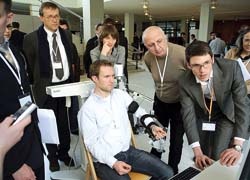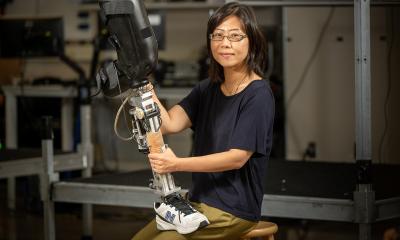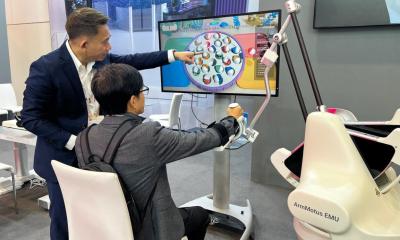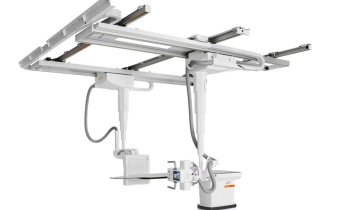2009 International Neuro-rehabilitation Symposium (INRS)
“My dream is that children with neurological motion disorders will travel through virtual worlds with the help of a robotic gait orthosis. For example, they might explore a farm, smelling the country air and hearing the chickens cluck; while this is happening, the robot would provide them with physiological gait training”, said Professor Paolo Bonato, Director of the Motion Analysis Laboratory at the Spaulding Rehabilitation Hospital, Boston, USA, presenting his research at the INRS, in February.

New, virtual computer worlds combine frequent repetition with motivation and feedback, and studies have shown that patients learn better if motivated and are given immediate feedback on their movement performance. They exercise enthusiastically and, supported by the equipment, can repeat the same movement over and over (repetition enables our brains to learn, e.g. playing the piano, walking, and so on). The 350 visiting neuro-biology researchers (from Europe, the USA, Mexico, Thailand, Hong Kong and India) agreed that research findings on technology-assisted neurological rehabilitation, added to the movement disorder therapy currently used, could help patients to practice movement patterns – and perhaps re-learn how to walk or grasp an object.
Professor W Zev Rymer, Director of Research at the Rehabilitation Institute of Chicago, USA, said that the INRS was ‘one of the most significant scientific meetings in our field to date’ and that such interdisciplinary contact must be maintained, and far more research undertaken to be able to offer patients the best possible treatment.
The event’s main organizer was med-tech firm Hocoma AG (www.hocoma
.com), which is an industrial partner of the MIMICS EU research project (www.mimics.ethz.ch) and has links with the EU Spinal Cord Repair research project (www.spinalcordrepair.eu).
The MIMICS project aims to improve sensory-motor rehabilitation with the help of virtual reality. Led by Prof. Robert Riener (ETH Zurich and the University of Zurich), project partners include the paraplegic centre at the Balgrist University Hospital (Switzerland), the University of Ljubljana (Slovenia), Barcelona University (Spain), the Neurological Clinic at Bad Aibling (Germany) and Hocoma AG (Switzerland).
Also EU-funded, the Spinal Cord Repair research project aims to identify new information and approaches to functional restoration after injury. Partners in the project: Karolinska Institute (Sweden), Zurich University (Switzerland), Cambridge University (England), Columbia University (USA) and the Friedrich Miescher Institute for Biomedical Research (Switzerland).
E-mail for the INRS Abstract Book: inrs2009@hocoma.com
01.05.2009







